A 2 stage dust collector is essential in a workshop! It separates larger chips from the finer dust so the filter AND your lungs stay clean!
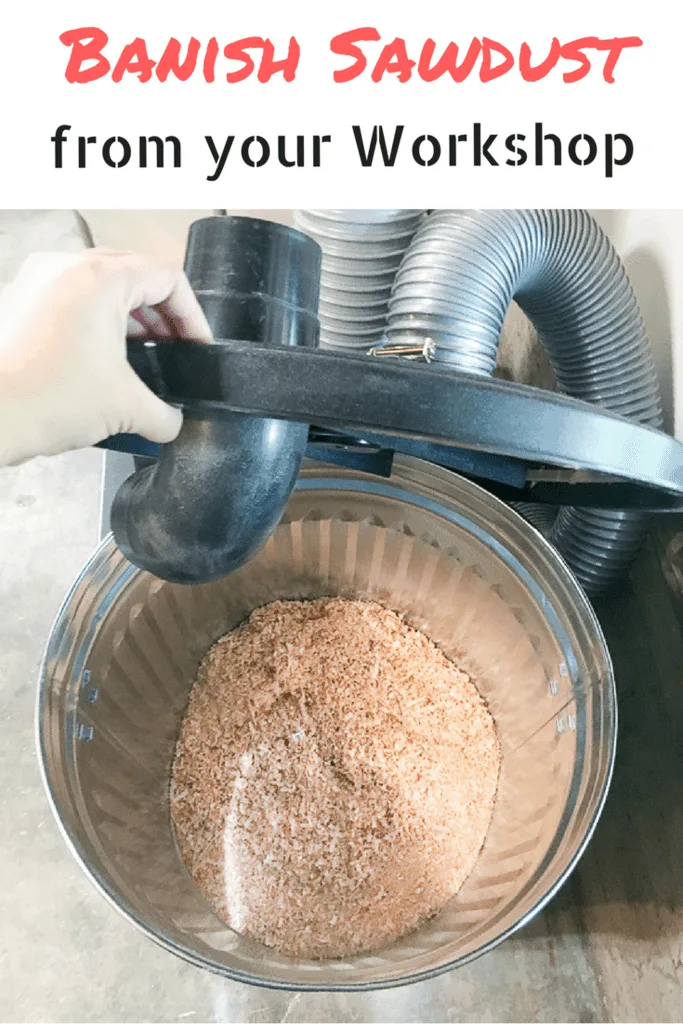
Do you rely on a shop vac to keep your workshop clean? Stop! A shop vac only moves the big wood chips out of the way, but doesn't do much to control the finer particles you really need to be worried about. I go into more detail about dust collectors vs shop vacs here.
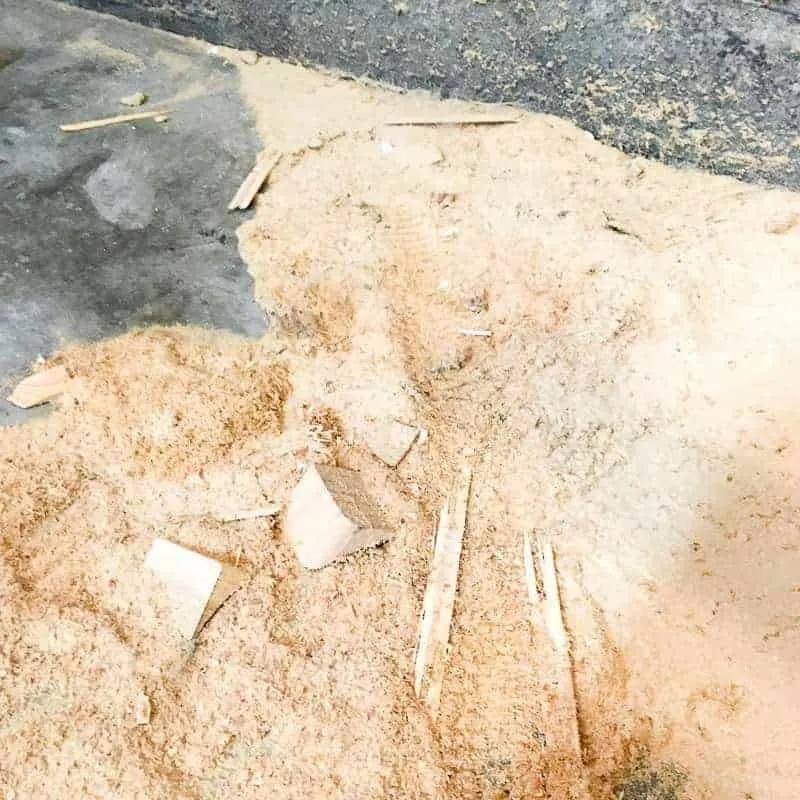
Already have a dust collector, but hate changing out the bag? Add a cyclone separator that traps the heavy sawdust in a trash can that's easy to dump out! Only the fine dust makes its way up to the filter, so it works better and longer.
Today, I'll show you how I turned my single-stage, 5 micron Harbor Freight dust collector into a 2 stage dust collector with ½ micron filtration!
This post contains affiliate links for your convenience. Purchases made through these links may earn me a small commission at no additional cost to you. Please visit my disclosures page for more information.
Why Install a 2-Stage Dust Collector?
The standard filter bag that comes with Harbor Freight dust collector doesn't trap the fine particles that are most dangerous to your lungs. This 0.5 micron filter upgrade has four times the surface area and is able to catch even that pesky MDF dust that seems to coat everything. The standard filter bag just spews that stuff back into the air!
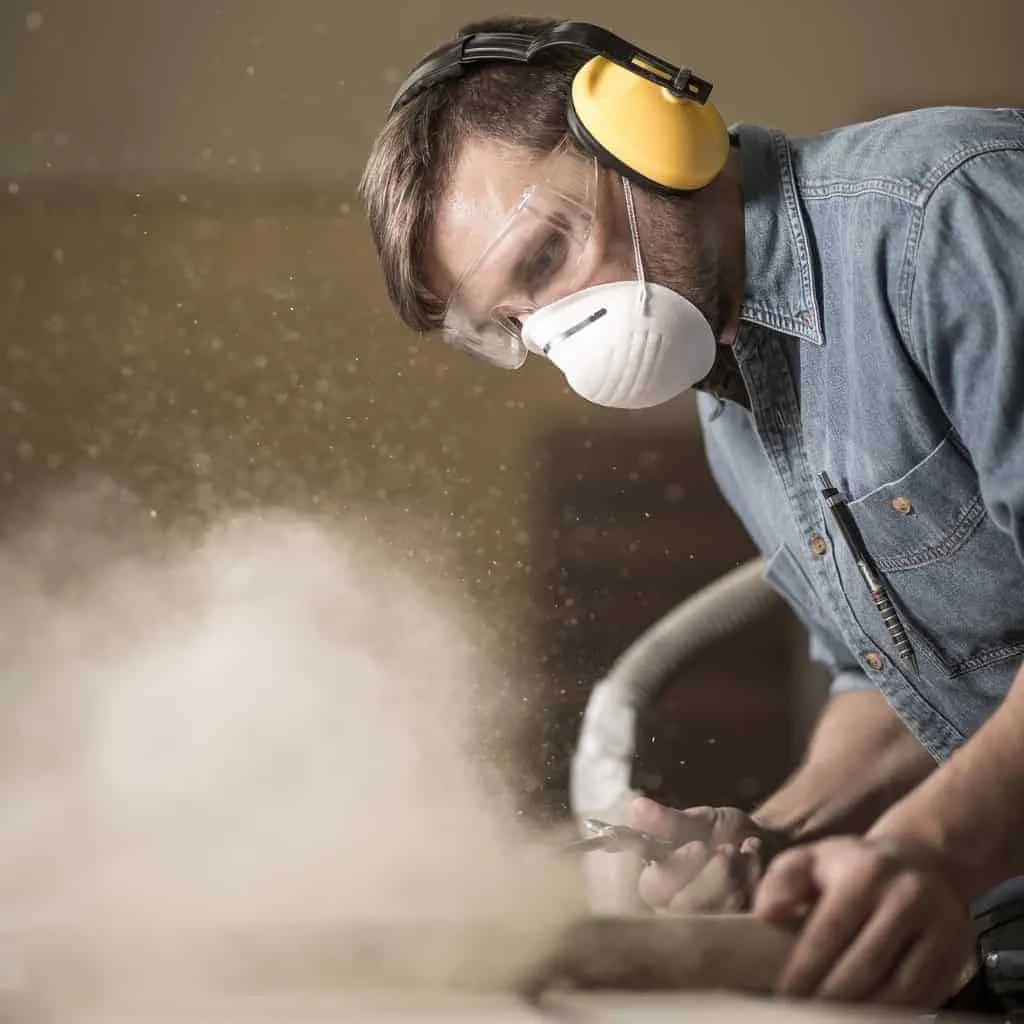
Not only that, but the increased surface area of the new filter means way more suction. More suction = more wood chips and dust moving out of your way!
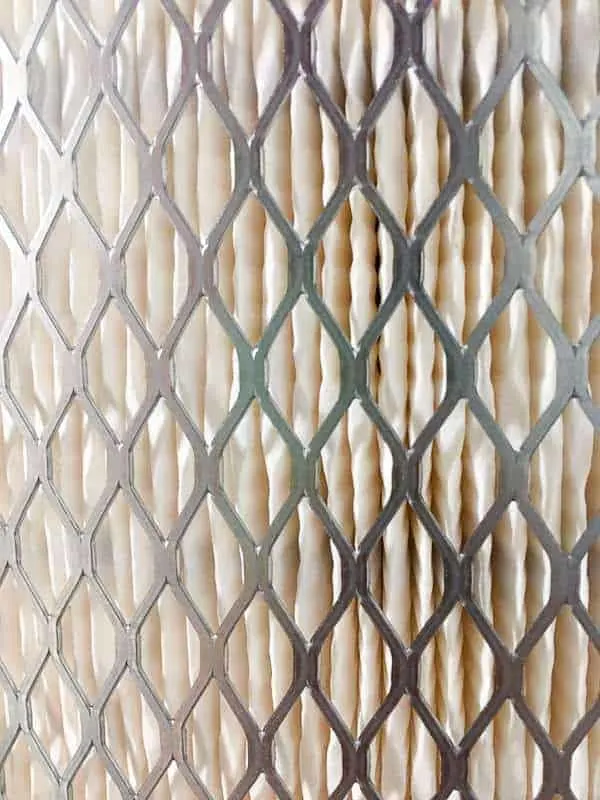
But that ultra-thin filter is ultra-delicate. Poke a hole in it, and you've created a release valve for all that dust to come flying out! Ever suck up a stray screw with your shop vac? You definitely don't want one rattling around in your expensive filter. You need a way to sort out the shrapnel from the fluff!
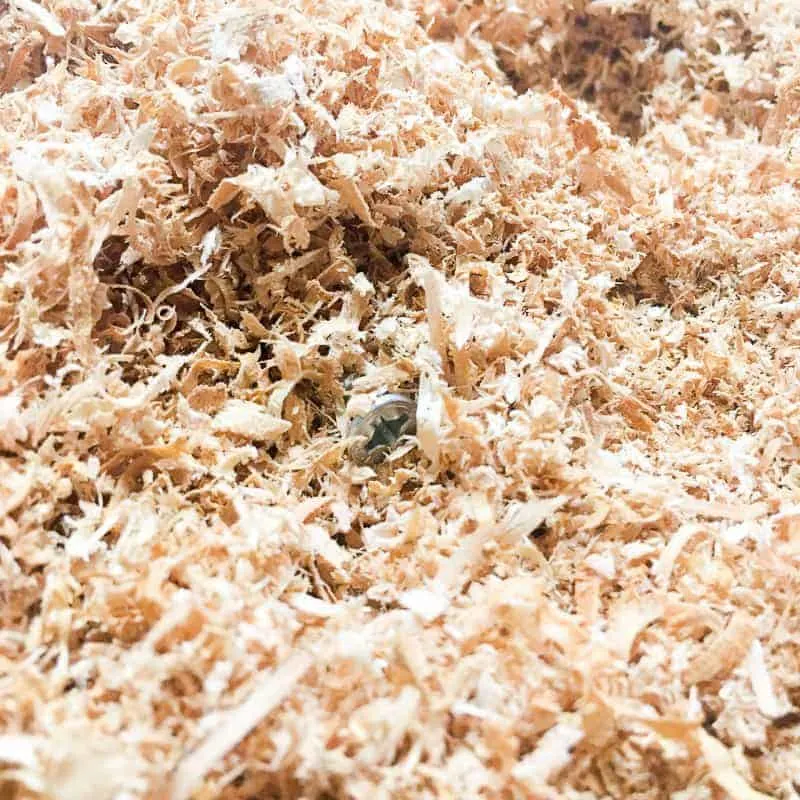
Luckily, a two-stage dust collector will take care of that, and it's simple to make. Just a trash can with a special lid will do! The lid creates a cyclone effect, causing the heavier pieces fall into the trash can. The lighter stuff moves on to the dust collector, where the finest particles are trapped in the filter. The rest falls into the collector bag.
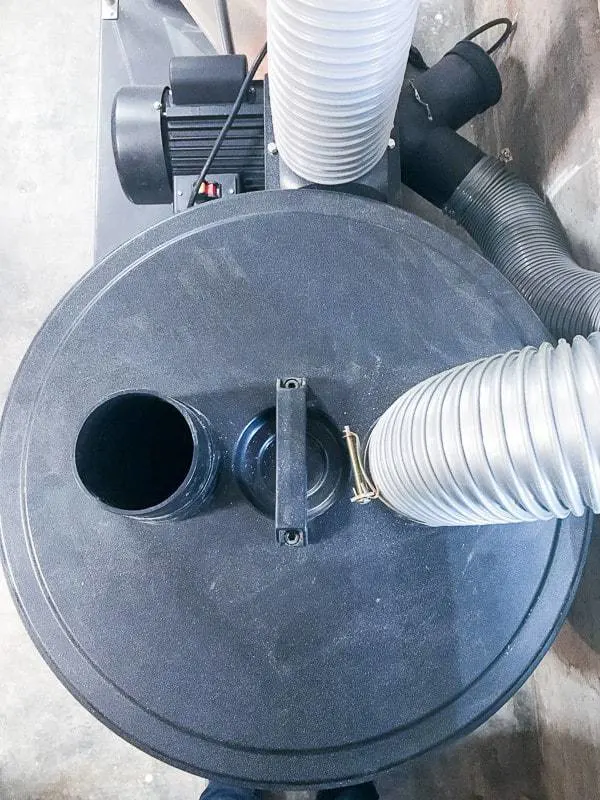
Now that you know why, I'll show you how to make a 2 stage dust collector for your own workshop!
Materials Required for Dust Collector System
- Harbor Freight 2 hp dust collector
- Wynn filter cartridge
- Trash can cyclone lid
- Large metal trash can
- 4" dust collection hose
- 4" hose clamps
How to Make a 2 Stage Dust Collector
Assemble the single stage dust collector
Start by assembling the Harbor Freight dust collector according to the directions. It's fairly straightforward to put together, although you'll want to figure out which screws go where before you start (ask me how I know!)
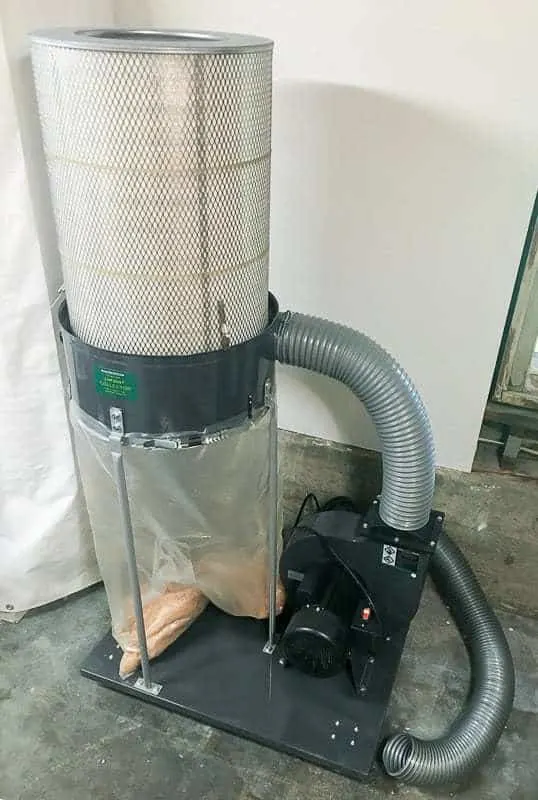
The Wynn filter comes with these little clips to attach it to the dust collector. Just set the filter in the center and hook them into place.
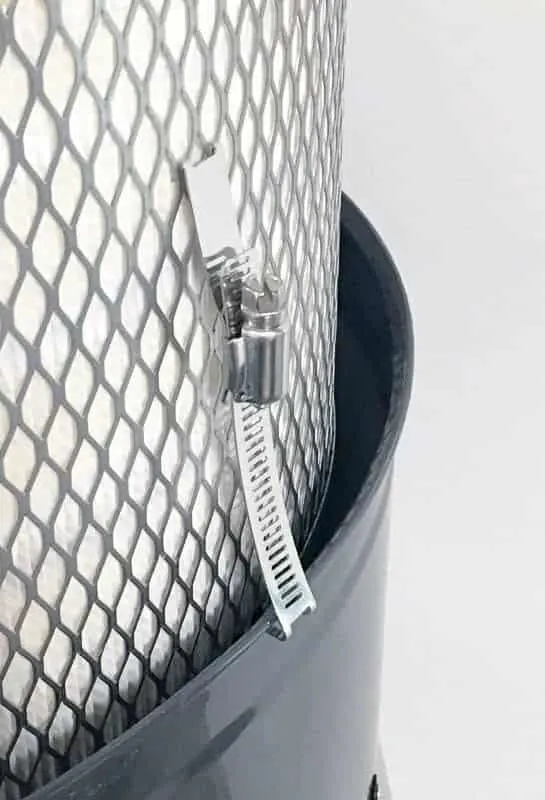
With the upgraded filter in place, you have a perfectly good single-stage dust collector. Wood chips and sawdust goes in through the 4" hose, spin around through the filter, and the heavy stuff falls into the bag below. When it gets full, just remove the bag and throw it away (or use the sawdust for other projects!)
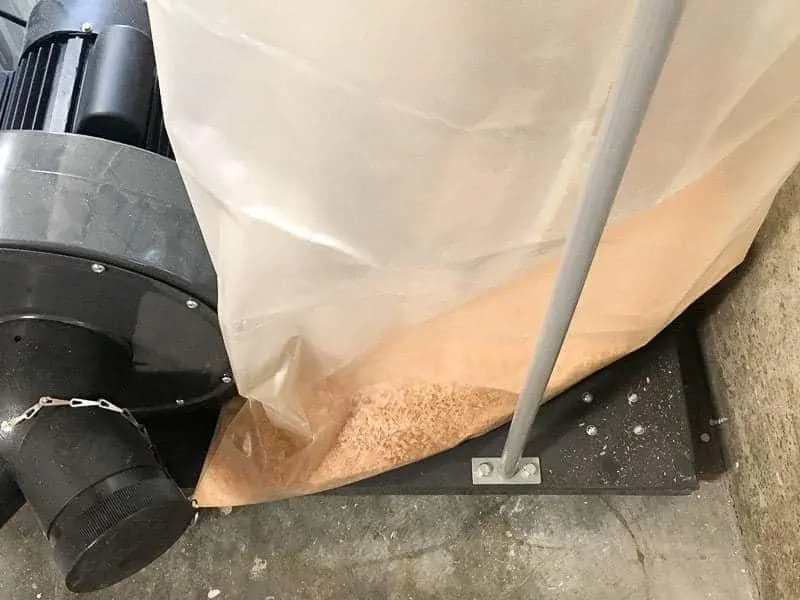
Add the trash can cyclone separator
Have you noticed how much sawdust your table saw generates? Don't even get me started on the planer! The standard collection bag will be full in no time, and replacing it isn't exactly fun. By adding a separator to this setup, removing the sawdust is as simple as dumping out a trash can!
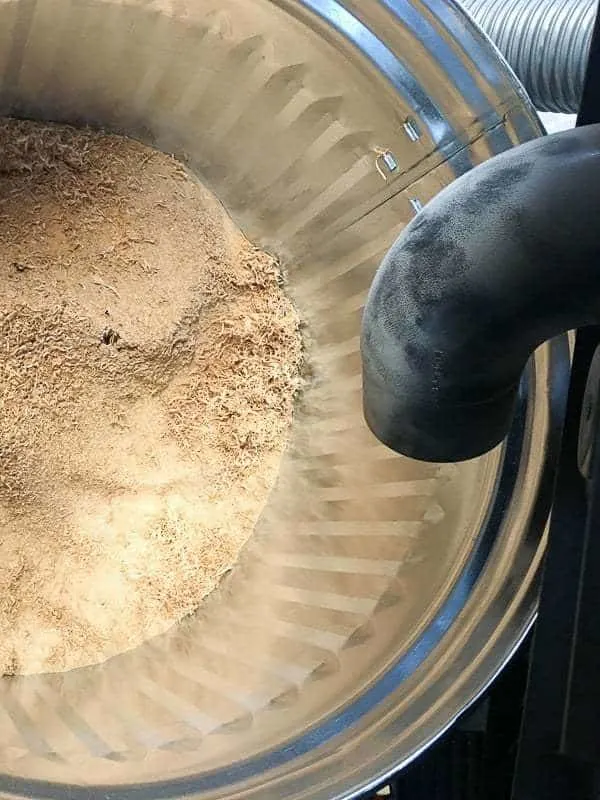
Instead of going straight into the filter, debris takes a spin in the trash can first. Only the lightest material and fine dust move on to the second stage. This sawdust roller coaster keeps the filter flowing longer and prevents damage to the fine mesh.
Connect the hose that comes out of the dust collector to the side of the separator without the bend on the inside of the lid. The side with the bend is attached to the hose that goes out to your tools.
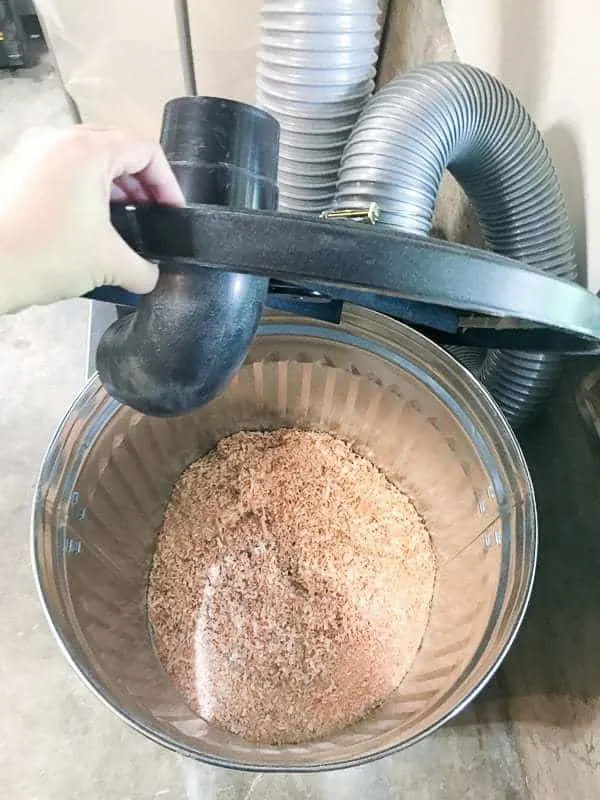
When sawdust is sucked into the separator, it gets swirled around the top of the trash can. The heavy stuff falls down, so only the lightest, fine dust goes up into the filter.
Make sure to keep the level of sawdust in the trash can lower than halfway full, or you'll start to see larger chips make its way up to the bag above. There needs to be plenty of room for air to circulate inside the can.
Hook the dust collector up to various tools
Most tools have either a 4" or 2 ½" dust port. The dust collector has a 4" opening, so you may need to step down the diameter in order to connect various tools. Keep in mind that this will reduce suction, so keep the larger size whenever possible.
This photo gives you a much better view of how everything is arranged in my workshop so that's it's close to the dust collector. I'm really happy with this set up! You can get plans for the miter saw station, router table, planer stand, table saw stand and t track table so you can build your own.
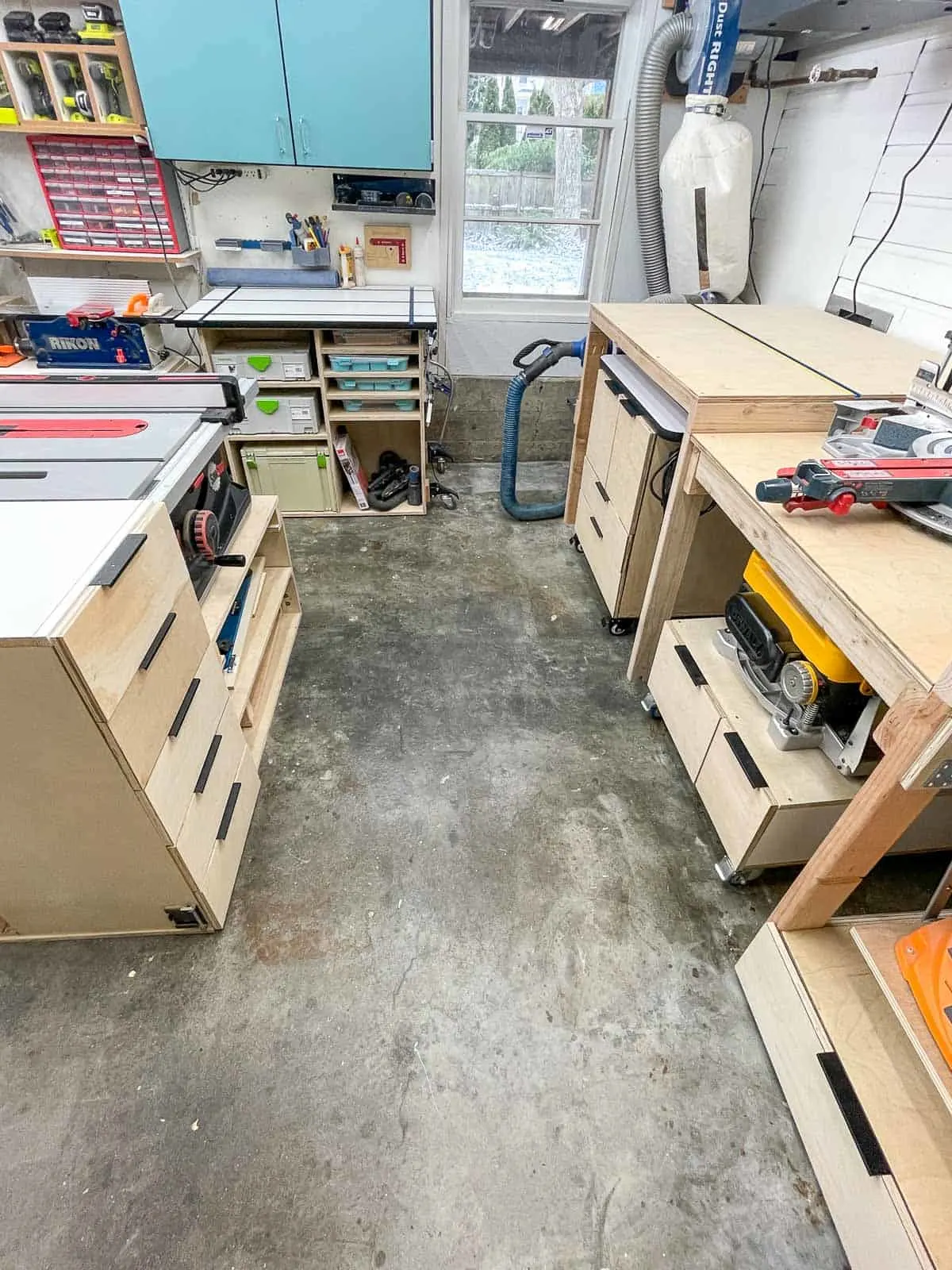
The miter saw and router table both have dust collection hoses that are hidden behind the miter saw station. Miter saw dust collection is particularly tricky, but a dust hood can help contain the mess.
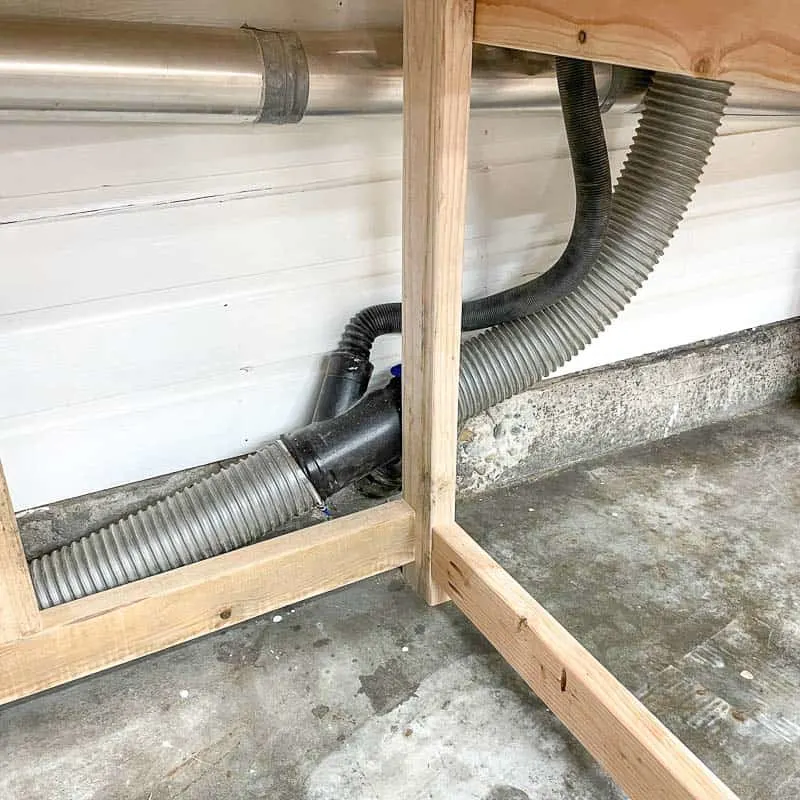
The table saw hose plugs in to a port on the side of the stand like a gas pump nozzle, so you don't have to fiddle with hose clamps.
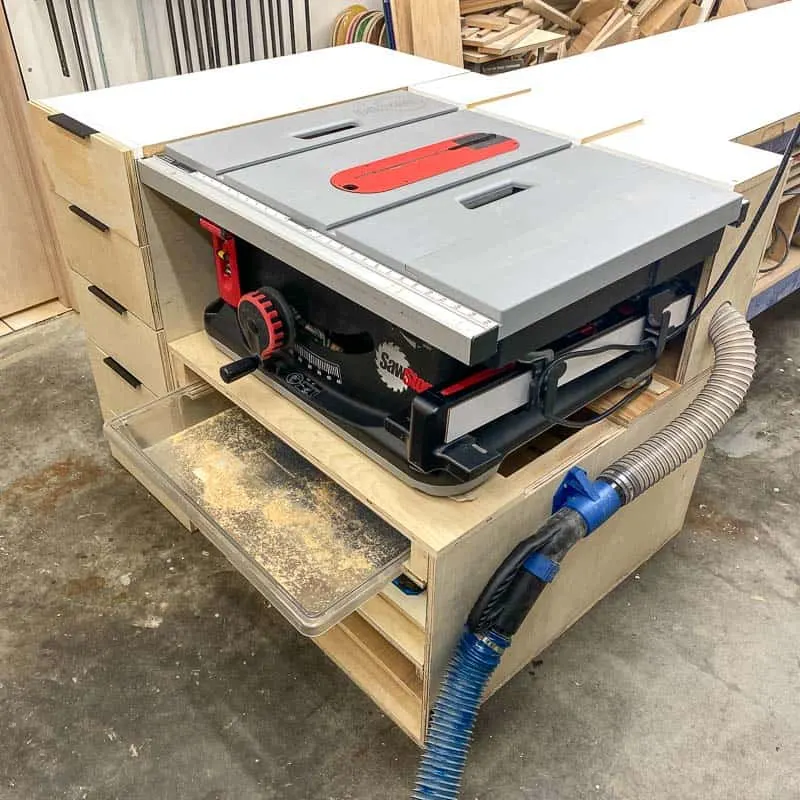
Each hose has a blast gate at this 3 way Y junction, so the suction only goes to the tool that's currently in use. At the top is a single hose that leads to the trash can separator. The blue bracket just holds the end of the expandable hose so it's easier to grab.
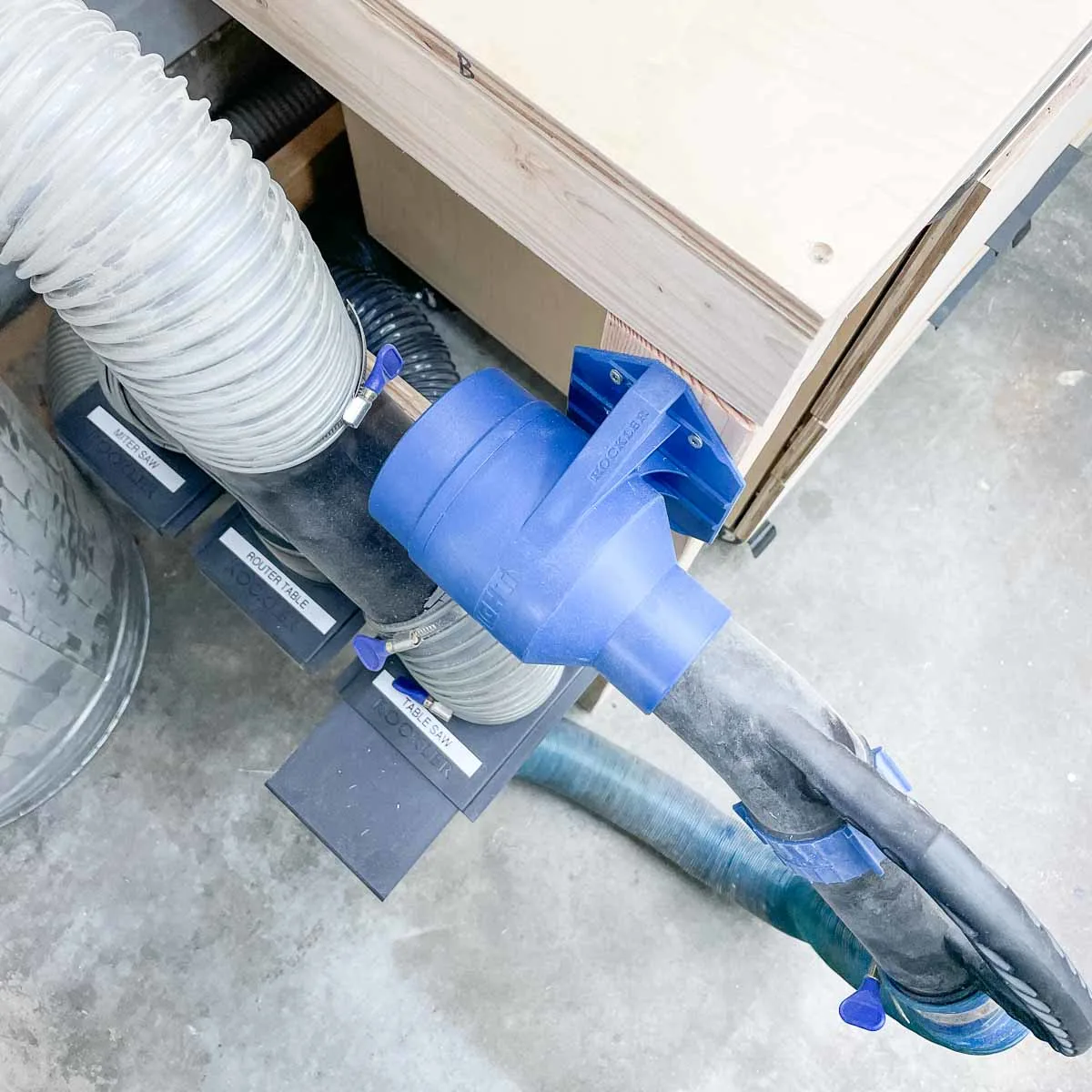
While I do lose some suction with this set up, it's been a total game changer in my small workshop! It's easy to switch between tools, which means the dust collector actually gets used when I need it!
Consider a wall mount dust collector to save space
UPDATE: I've switched out my giant machine for a smaller wall mount dust collector to save space in my tiny workshop! It works just as well as the version I talk about above, but in a much smaller footprint. You can even upgrade the bag to the same type of canister filter as the bigger version!
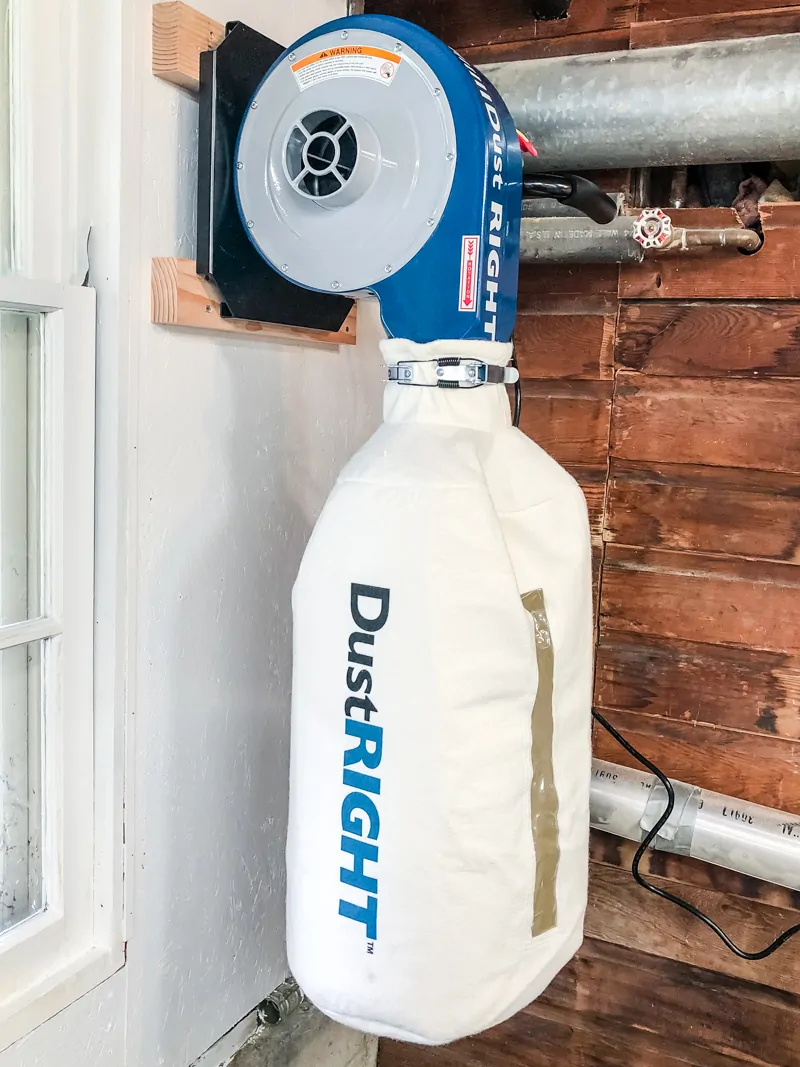
Dust collectors may seem like overkill in a small workshop that usually relies on a shop vac, but it's crucial for containing that dangerous dust! I've noticed a huge difference after a long day of woodworking, both in the cleanliness of the shop and the feeling in my lungs!

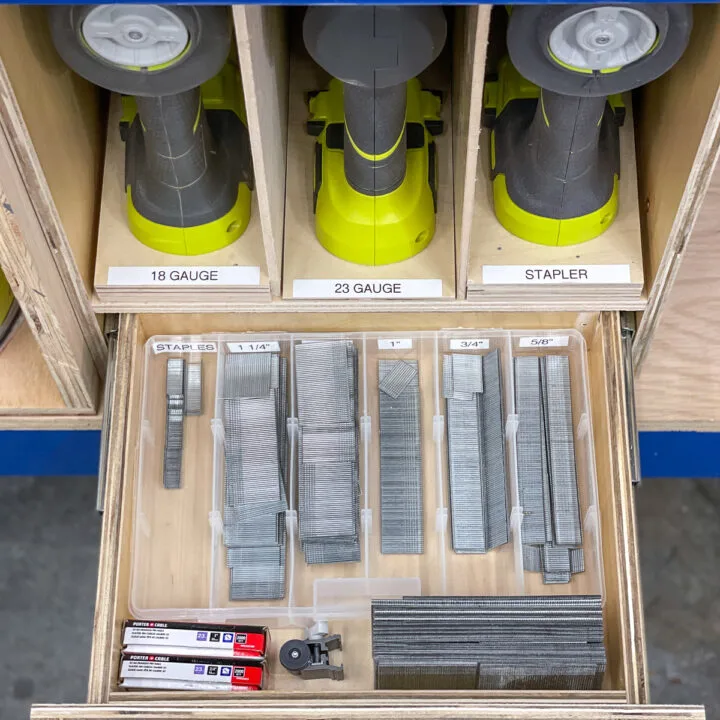
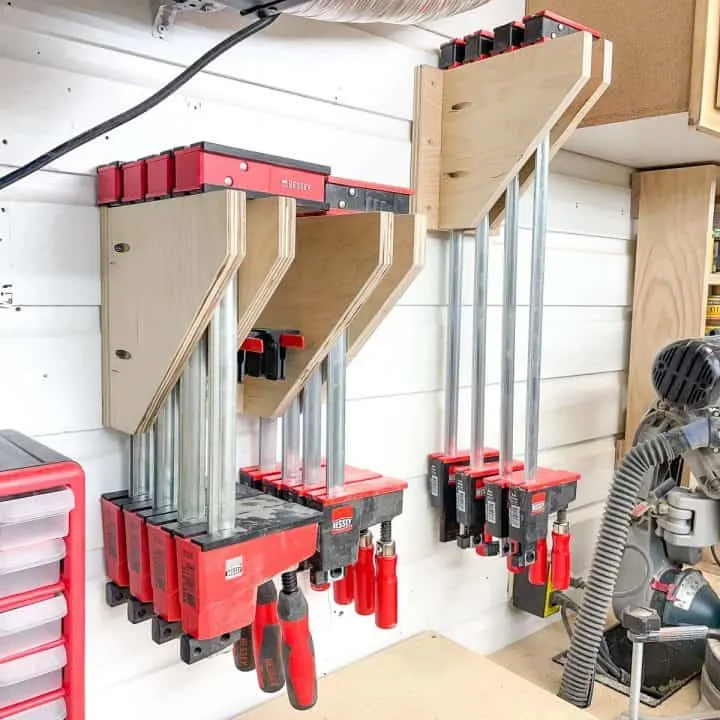
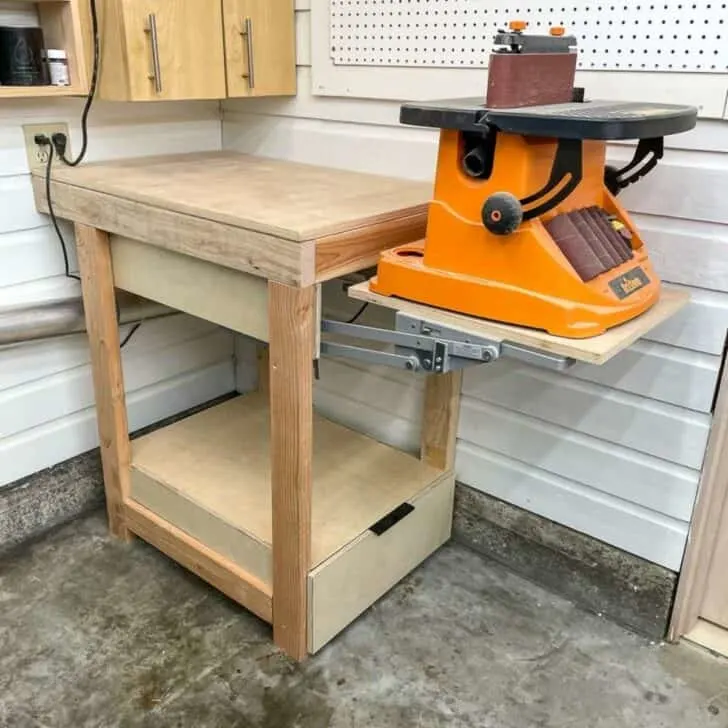
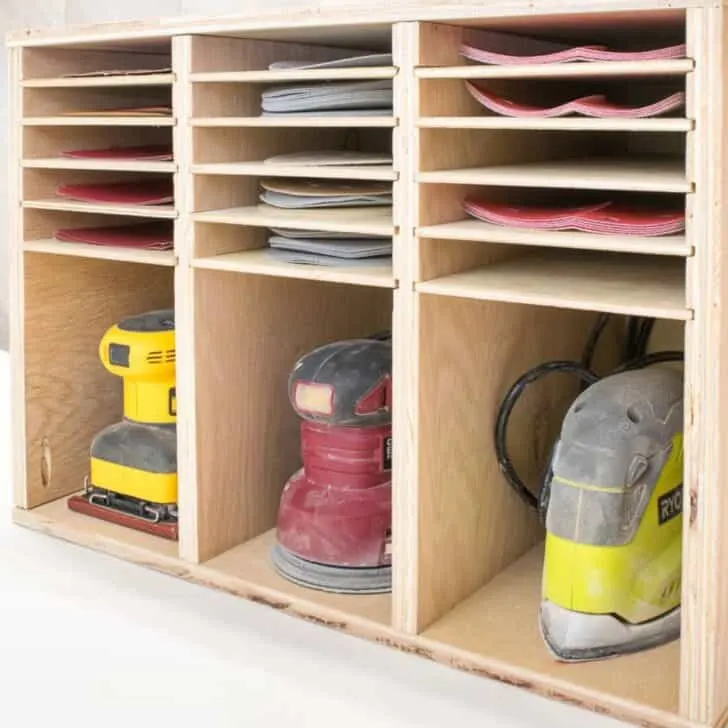
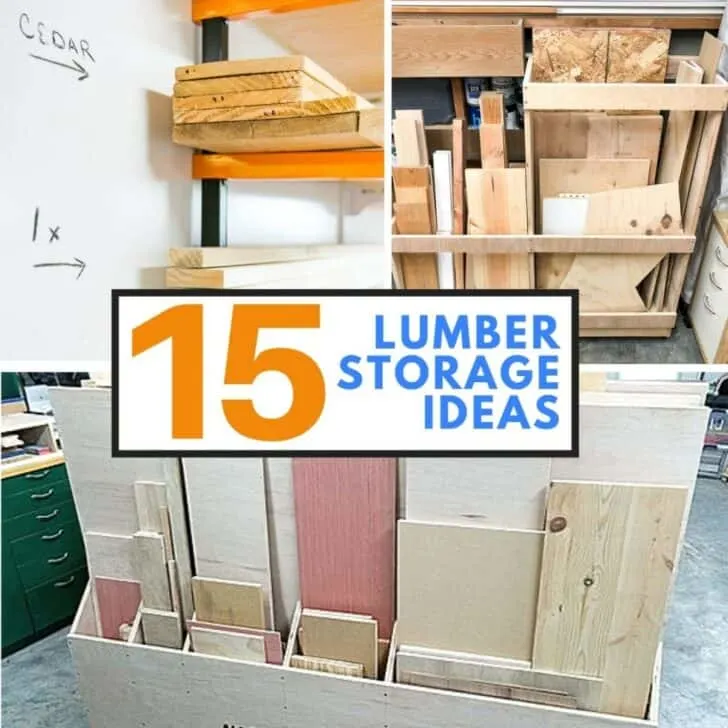
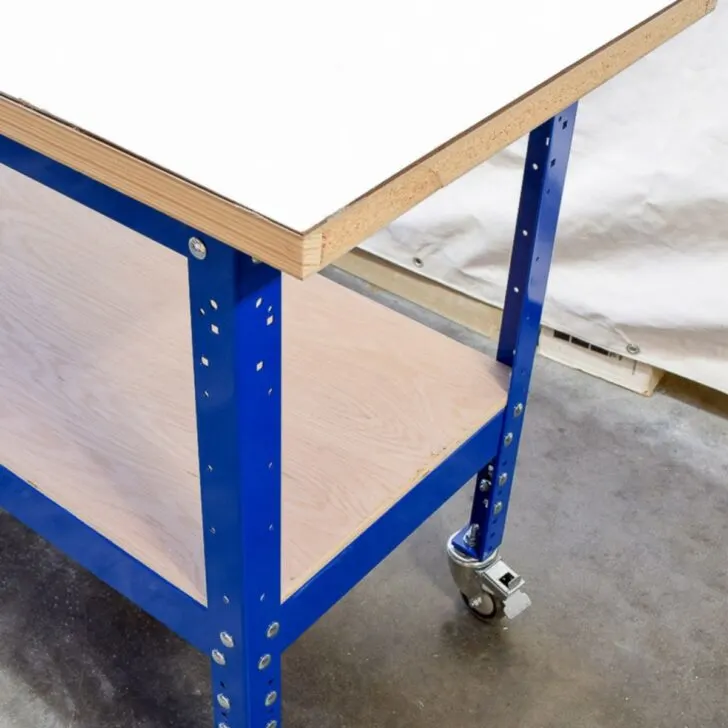
Sheri
Friday 23rd of June 2017
Can't wait to see how you hook it up to all of your machines. I'm in desperate need of dust collection. This is helpful!!!
Janice at Sawdust Sisters
Monday 19th of June 2017
Vineta. I need this in my life!! Definitely pinning. And like Toni, I'm hurting for room, too. But I may be able to shift a few things around!
Vineta
Monday 19th of June 2017
It was really hard to find room in my tiny one-car garage space! But it actually feels bigger now that there's not piles of sawdust littering the floor all the time!
Richard
Friday 16th of June 2017
Having a dust collector will be really useful for everyone because it can protect our health! I like your idea and thanks so much for sharing this helpful workshop experiences. :D
Carolann
Friday 16th of June 2017
Wow, what a great idea! Never saw anything like this before and I love it!
Toni
Wednesday 14th of June 2017
That thing is so cool, if we had room in the garage for one I'd follow your lead. Yes, your lungs will thank you for sure. Smart move!
Vineta
Wednesday 14th of June 2017
After building the storage for our shed, I moved some things around to make room for the dust collector. It's musical chairs over here!